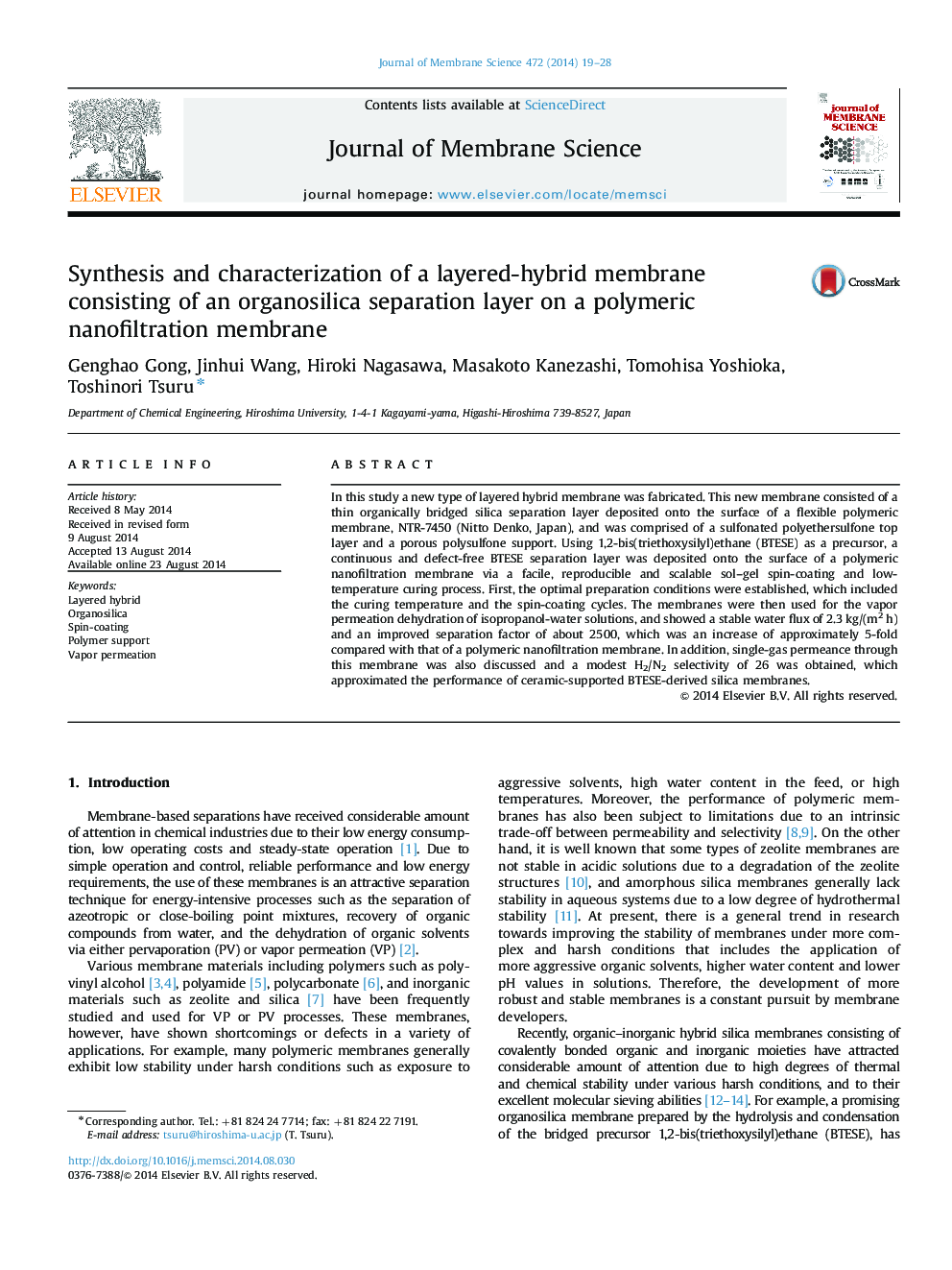| کد مقاله | کد نشریه | سال انتشار | مقاله انگلیسی | نسخه تمام متن |
|---|---|---|---|---|
| 633242 | 1456027 | 2014 | 10 صفحه PDF | دانلود رایگان |
• A thin organosilica layer was deposited onto polymeric nanofiltration membranes.
• This layered hybrid membrane was fabricated using a sol–gel spin-coating process.
• These membranes were applied to vapor permeation dehydration of IPA/H2O mixtures.
• The membranes showed an water flux of 2.3 kg/(m2 h) and separation factor of 2500.
• The membranes showed an improved gas separation performance for H2/N2 (≈26).
In this study a new type of layered hybrid membrane was fabricated. This new membrane consisted of a thin organically bridged silica separation layer deposited onto the surface of a flexible polymeric membrane, NTR-7450 (Nitto Denko, Japan), and was comprised of a sulfonated polyethersulfone top layer and a porous polysulfone support. Using 1,2-bis(triethoxysilyl)ethane (BTESE) as a precursor, a continuous and defect-free BTESE separation layer was deposited onto the surface of a polymeric nanofiltration membrane via a facile, reproducible and scalable sol–gel spin-coating and low-temperature curing process. First, the optimal preparation conditions were established, which included the curing temperature and the spin-coating cycles. The membranes were then used for the vapor permeation dehydration of isopropanol-water solutions, and showed a stable water flux of 2.3 kg/(m2 h) and an improved separation factor of about 2500, which was an increase of approximately 5-fold compared with that of a polymeric nanofiltration membrane. In addition, single-gas permeance through this membrane was also discussed and a modest H2/N2 selectivity of 26 was obtained, which approximated the performance of ceramic-supported BTESE-derived silica membranes.
Journal: Journal of Membrane Science - Volume 472, 15 December 2014, Pages 19–28
